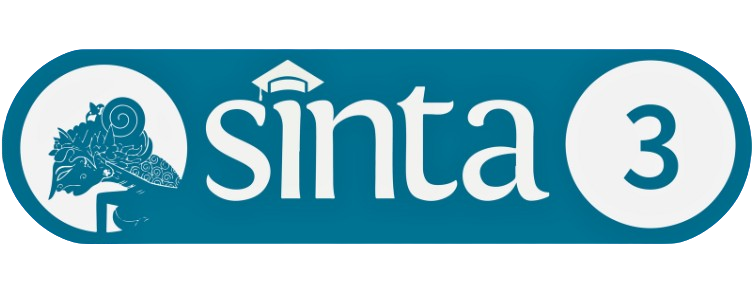Pengaruh Grit terhadap Self-Determination pada Atlet yang Memutuskan Kembali Pasca Cedera Berat
Downloads
Penelitian ini bertujuan untuk menguji apakah terdapat pengaruh grit terhadap self-determination pada atlet yang memutuskan kembali pasca mengalami cedera berat. Self-Determination Theory memaparkan perkembangan kebutuhan dasar psikologis individu yang sifatnya melekat (inherent) dan dibawa sejak lahir (innate) sebagai faktor motivasi pada perilaku individu. Sedangkan grit mengukur ketertarikan seseorang apakah ia mampu fokus dan bertahan terhadap suatu bidang atau sering berganti-ganti ketertarikan pada suatu bidang tertentu. Partisipan dalam penelitian ini merupakan atlet yang memutuskan kembali pasca cedera berat. Metode yang digunakan dalam penelitian ini merupakan kuantitatif eksplanatori. Pengambilan data diambil menggunakan survei google form dan mendapatkan 72 responden. Hasil dari penelitian ini menunjukan bahwa terdapat pengaruh yang signifikan pada grit terhadap self-determination atlet yang memutuskan kembali pasca cedera berat.
Bianco, T., & Eklund, R. C. (2001). Conceptual considerations for social support research in sport and exercise settings: The case of sport injury. Journal of sport and exercise psychology, 23(2), 85-107.
Brown, G. T., Hainline, B., Kroshus, E., & Wilfert, M. (2014). Mind, body and sport: Understanding and supporting student-athlete mental wellness. Indianapolis, IN: National Collegiate Athletic Association.
Deci, E. L., & Ryan, R. M. (2012). Motivation, personality, and development within embedded social contexts: An overview of self-determination theory. In The Oxford handbook of human motivation (pp. 85–107). Oxford University Press.
Duckworth, A. (2016). Grit: Kekuatan Passion dan Kegigihan (Revisi). PT. Gramedia Pustaka Utama.
Duckworth, A., & Gross, J. J. (2014). Self-Control and Grit: Related but Separable Determinants of Success. Current Directions in Psychological Science, 23(5), 319–325. https://doi.org/10.1177/0963721414541462
Duckworth, A. L., Peterson, C., Matthews, M. D., & Kelly, D. R. (2007). Grit: Perseverance and Passion for Long-Term Goals. Journal of Personality and Social Psychology, 92(6), 1087–1101. https://doi.org/10.1037/0022-3514.92.6.1087
Foss, K. D. B., Thomas, S., Khoury, J. C., Myer, G. D., & Hewett, T. E. (2018). A school-based neuromuscular training program and sport-related injury incidence: A prospective randomized controlled clinical trial. Journal of Athletic Training, 53(1), 20–28. https://doi.org/10.4085/1062-6050-173-16
Gledhill, A., & Forsdyke, D. (2021). The psychology of sports injury: From risk to retirement. Routledge.
Hasanah. (2019). HUBUNGAN PERSEN LEMAK TUBUH DAN TINGKAT KECUKUPAN ASUPAN ZAT GIZI MAKRO DENGAN KONDISI FISIK ATLET FUTSAL DI SURABAYA. Perpustakaan Universitas Airlangga, 1, 1–8.
Hughes, R., & Coakley, J. (2016). Positive Deviance among Athletes: The Implications of Overconformity to the Sport Ethic. Sociology of Sport Journal, 8(4), 307–325. https://doi.org/10.1123/ssj.8.4.307
Johnston, L. H., & Carroll, D. (1998). The context of emotional responses to athletic injury: A qualitative analysis. Journal of Sport Rehabilitation, 7(3), 206–220. https://doi.org/10.1123/jsr.7.3.206
Lavallee, D., Kremer, J., & Moran, A. (2020). Psychology of Sport. Social Sciences in Sport, 169–189. https://doi.org/10.5040/9781492595885.ch-003
Magee, D. J., Zachazewski, J. E., Quillen, W. S., & Manske, R. C. (2010). Athletic and Sport Issues in Musculoskeletal Rehabilitation-E-Book. Elsevier Health Sciences.
Martin, J. J., Byrd, B., Watts, M. L., & Dent, M. (2015). Gritty, hardy, and resilient: Predictors of sport engagement and life satisfaction in wheelchair basketball players. Journal of Clinical Sport Psychology, 9(4), 345–359. https://doi.org/10.1123/jcsp.2015-0015
Neuman, W. L. (2011). Social Research Methods: Qualitative and Quantitative Approaches. In Pearson Education.
O´Connell, S., & Manschreck, T. C. (2012). Playing through the pain : Current Psychiatry.
Pallant, J. (2020). SPSS survival manual: A step by step guide to data analysis using IBM SPSS. Routledge.
Podlog, L., & Eklund, R. C. (2007). The psychosocial aspects of a return to sport following serious injury: A review of the literature from a self-determination perspective. Psychology of Sport and Exercise, 8(4), 535–566. https://doi.org/10.1016/j.psychsport.2006.07.008
Podlog, L., & Eklund, R. C. (2010). Returning to competition after a serious injury: The role of self-determination. Journal of Sports Sciences, 28(8), 819–831. https://doi.org/10.1080/02640411003792729
Ristolainen, L., Kettunen, J. A., Kujala, U. M., & Heinonen, A. (2012). Sport injuries as the main cause of sport career termination among Finnish top-level athletes. European Journal of Sport Science, 12(3), 274–282. https://doi.org/10.1080/17461391.2011.566365
Santi, G., & Pietrantoni, L. (2013). Psychology of sport injury rehabilitation: A review of models and interventions. Journal of Human Sport and Exercise, 8(4), 1029–1044. https://doi.org/10.4100/jhse.2013.84.13
Santi, G., Pietrantoni, L., O´Connell, S., Manschreck, T. C., Ristolainen, L., Kettunen, J. A., Kujala, U. M., Heinonen, A., Wilson, G., Pritchard, M., Pa, Mellalieu, S. D., Hanton, S., Podlog, L. ;, Eklund, R., Klenk, C. a, Ryan, R. M., Deci, E. L., Scharneck, L., ... Brown, G. T. (2013). Sport injury and illness: Elite skiers describe their experiences. Jurnal Olahraga Prestasi, 8(3), 1087–1101. https://doi.org/10.1080/02701367.1999.10608033
Scharneck, L. (2017). The mediating effect of self-determined motivation in student-athlete perceptions of coaching behaviors and its effect on grit and mental toughness. 1–50.
Van Raalte, J. L., Brewer, D. D., Brewer, B. W., & Linder, D. E. (1993). Sport psychologists' perceptions of sport and mental health practitioners. Journal of Applied Sport Psychology, 5(2), 222–233. https://doi.org/10.1080/10413209308411316
Williams, J. M., & Roepke, N. (1993). Psychology of injury and injury rehabilitation. Handbook of Research on Sport Psychology, 815–839.
BRPKM is a periodical publication with open access to the Creative Commons Attribution 4.0 International (CC-BY 4.0). Therfore, the copyright remains with the author.
With this license, anyone has the right to use the information and to re-distribute the content contained in this journal for any purpose, including commercial purposes. It can be done as long as it fulfills two conditions, namely; (1) you shall provide attribution by citing the original link source, and state if any changes have been made; and (2) you may not use any legal provisions or technological means of control that can legally restrict others from doing the things that are permitted by this license.
Journal editors will not ask the author to approve the transfer of copyright on all published manuscripts.










